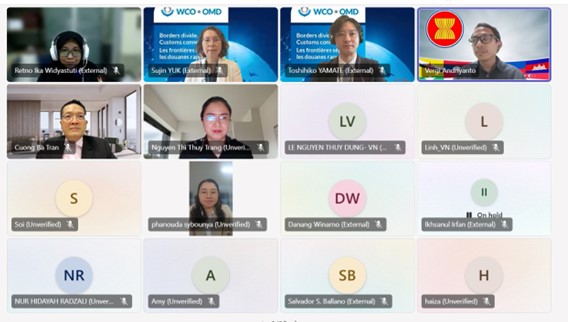
The ASEAN Secretariat, 17-18 June 2025 – The ASEAN Secretariat, with the support from the World Customs Organization Regional Office for Capacity Building for Asia/Pacific (ROCB-A/P), conducted the Regional Workshop on Product-Based Classification on 17-18 June 2025, via video conference.
The workshop aimed to support ASEAN Customs officials in upskilling their tariff classification of textile products, metals (including iron and steel), and machinery products, thereby promoting the uniform implementation of the ASEAN Harmonised Tariff Nomenclature (AHTN) 2022. The workshop was facilitated by classification experts from the WCO Secretariat, Japan Customs, the Chairperson of the TSWGC, and a consultant to the TSWGC.
Mr. Cuong Ba Tran, Assistant Director/Head of Trade Facilitation Division of the ASEAN Secretariat, emphasised the critical need for consistent implementation of the AHTN. He also highlighted the private sector’s concerns related to classification discrepancies between importing and exporting AMS, which have led to significant challenges for traders, specifically impacting the application of rules of origin and preferential tariff rates. To mitigate these issues, he stressed that a uniform understanding, interpretation, and implementation of classification across ASEAN Member States (AMS) would greatly benefit customs administrations, traders, and other stakeholders. Mr. Taufik Ismail, the Deputy Director of the Directorate General of Customs and Excise of Indonesia and Chairperson of the TSWGC, reaffirmed the role of the WCO Harmonized System (HS) in ensuring transparency and efficiency, encouraging customs officers to strengthen their capacity to implement the AHTN properly and uniformly in the region. Mr. Sok Sovitheya, the Deputy Director-General of the General Department of Customs and Excise of Cambodia, emphasised the need to ensure accurate and consistent implementation of the AHTN, taking into account the increasing complexity of classification due to new products and technologies.
The workshop featured practical guidance on applying the General Rules for the Interpretation of the HS (GIRs) and in-depth sessions on classifying textile, metal, and machinery products. Participants also took part in hands-on classification exercises to strengthen their technical capabilities.
